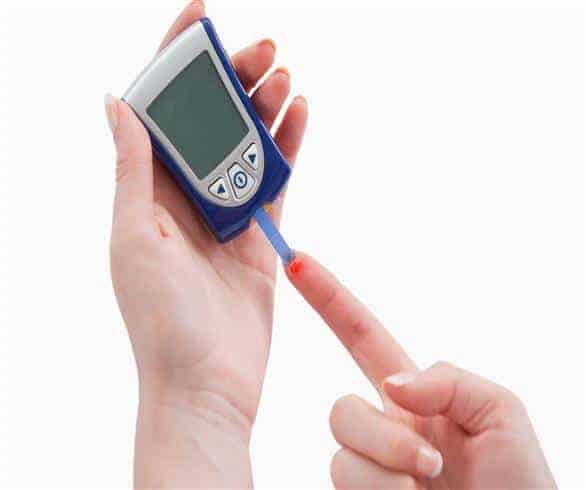
BY: Corrina Mosca
With eleven million Canadians suffering from diabetes or prediabetes, this chronic disease is a prominent issue across the nation. Often debilitating and sometimes fatal, this condition either prevents the body from producing insulin or disables it from properly using the insulin it creates. This leads to high blood sugar levels, which can damage organs, nerves and blood vessels.
Insulin promotes the absorption of glucose from the blood into fat, liver and skeletal muscle cells, which aids the metabolism of carbohydrates, fats and protein.
In a healthy body, certain cells in the pancreas produce insulin, a hormone that controls the amount of glucose present in the blood. Insulin allows cells to use or store energy, helping the body to function properly. Without it, sugar builds up in the blood, leading to potentially serious complications.
There are two main forms of diabetes: type 1, and type 2. The first type is characterized by a complete lack of insulin in the body. This occurs when the immune system mistakenly attacks and kills the pancreas’s beta cells, preventing the creation of insulin. As such, sugar builds up in the bloodstream instead of being used as energy or stored as fat. Because of this, type 1 diabetes requires treatment with insulin. This form of diabetes often develops in childhood or adolescence and affects about five to 10 per cent of diabetes patients.
On the other hand, type 2 diabetes arises when the body is either unable to properly use the insulin it creates, or does not produce enough insulin. As in type 1 diabetes, this causes sugar to build up in the blood, which can lead to chronic kidney disease, eye disease, heart attack, stroke, anxiety, nerve damage, foot problems and erectile dysfunction. Type 2 diabetes is most often acquired during adulthood, but children may also be affected.
There are other forms of this disease as well, including gestational diabetes and prediabetes. Gestational diabetes is a temporary condition that occurs during pregnancy, when women without diabetes develop high blood sugar levels. This can result in an increased risk of both mother and child developing diabetes. Prediabetes refers to blood glucose levels that are higher than normal, but not high enough to be considered diabetes. Often, prediabetes is a precursor to type 2 diabetes.
While possible causes for type 1 diabetes have not been defined, type 2 diabetes most often presents itself in people who have a family history of diabetes, are a member of a high-risk ethnic group, are overweight, or have other health complications that are associated with diabetes.
Although type 1 diabetes may only be treated by insulin, natural remedies are available to aid with associated diabetic symptoms.
ALOE VERA – 200–300MG DAILY
Filled with a soothing, cool gel, the leaves of this succulent plant have been a medical and cosmetic favourite for centuries. Historically, it has been revered for its healing, moisturizing and laxative properties. Today, it is also used as a traditional remedy for a variety of conditions, including asthma, epilepsy and osteoarthritis. Recent studies have also shown that this shrub, known to the Egyptians as the “plant of immortality,” can be used to treat diabetes.
EVIDENCE FOR ALOE VERA
One study of diabetic and prediabetic individuals suggested that taking aloe vera as an oral supplement can significantly reduce blood sugar levels. Additionally, aloe vera was found to stimulate the secretion of insulin, and worked most efficiently in patients with blood sugar levels of 200mg/dL (Dick et al., 2016).
Another double blind randomized controlled trial found that taking aloe vera orally could help to revert impaired fasting glucose levels in pre-diabetic patients (Alinejad-Mofrad et al., 2015).
FENUGREEK – 500–1500MG DAILY
Similar to clover, this herb is native to the Mediterranean region, southern Europe and western Asia. Often used in cooking, fenugreek smells and tastes somewhat like maple syrup. For medicinal purposes, the plant is administered orally to treat digestive problems, including upset stomach, constipation and gastritis; painful menstruation; polycystic ovary syndrome; obesity; atherosclerosis; respiratory illnesses; kidney ailments and cancer. It has also been found to slow the absorption of sugars in the stomach as well as stimulate insulin, making it a go-to supplement for individuals with diabetes.
EVIDENCE FOR FENUGREEK
For one clinical trial study, 24 type 2 diabetic patients were administered 10 grams of powdered fenugreek daily and asked to consume it in yogurt or hot water. At the end of the study, those who had soaked the fenugreek in hot water found that their fasting blood sugar levels decreased significantly (Kassaian et al., 2009).
In an earlier study, 10 insulin-dependent type 1 diabetes patients were randomly assigned to take 50g of fenugreek seed powder daily for 10 days. At the end of the trial, researchers found fenugreek to significantly reduce fasting blood glucose levels and improve glucose tolerance (Sharma et al., 1990).
GINGER – 550–1100MG DAILY
Native to the warmer parts of Asia, this leafy plant is a star player in both cooking and natural medicine. Most commonly, it is used to help treat various stomach issues, including nausea, colic, diarrhea, irritable bowel syndrome and loss of appetite. It has also been used for pain relief from rheumatoid arthritis, osteoarthritis, upper respiratory tract infections and burns. Recently, studies have been conducted to determine its effectiveness in moderating blood sugar levels.
EVIDENCE FOR GINGER
A 2015 study comprised of five randomized clinical trials found that ginger root supplementation significantly lowered blood glucose concentration. According to the report, this suggests that ginger may be an effective intervention for managing type 2 diabetes, especially when combined with dietary and lifestyle interventions (Daily et al., 2015).
Another recent study also found ginger to significantly decrease fasting blood sugar levels. As such, it might be a good remedy for type 2 diabetic patients looking to avoid secondary chronic complications of the disease (Khandouzi et al., 2015).








